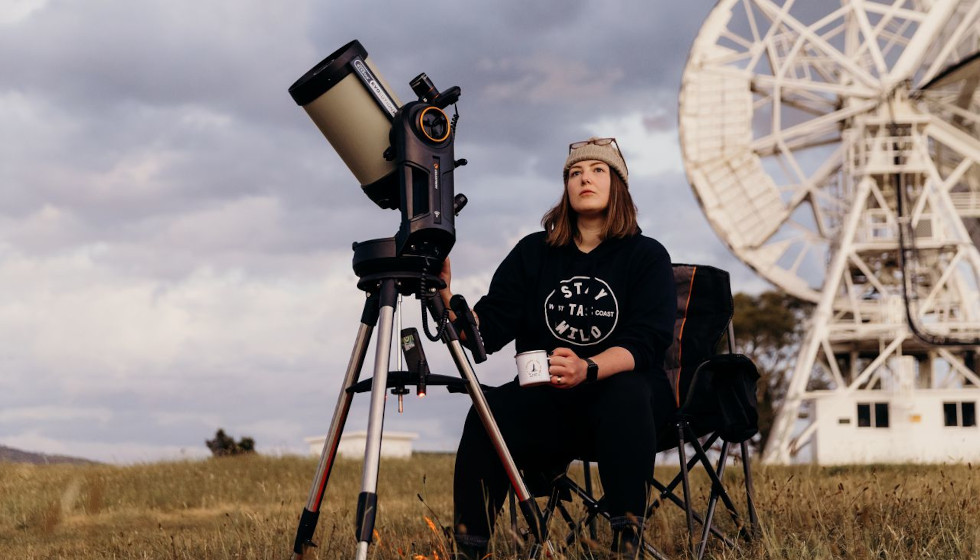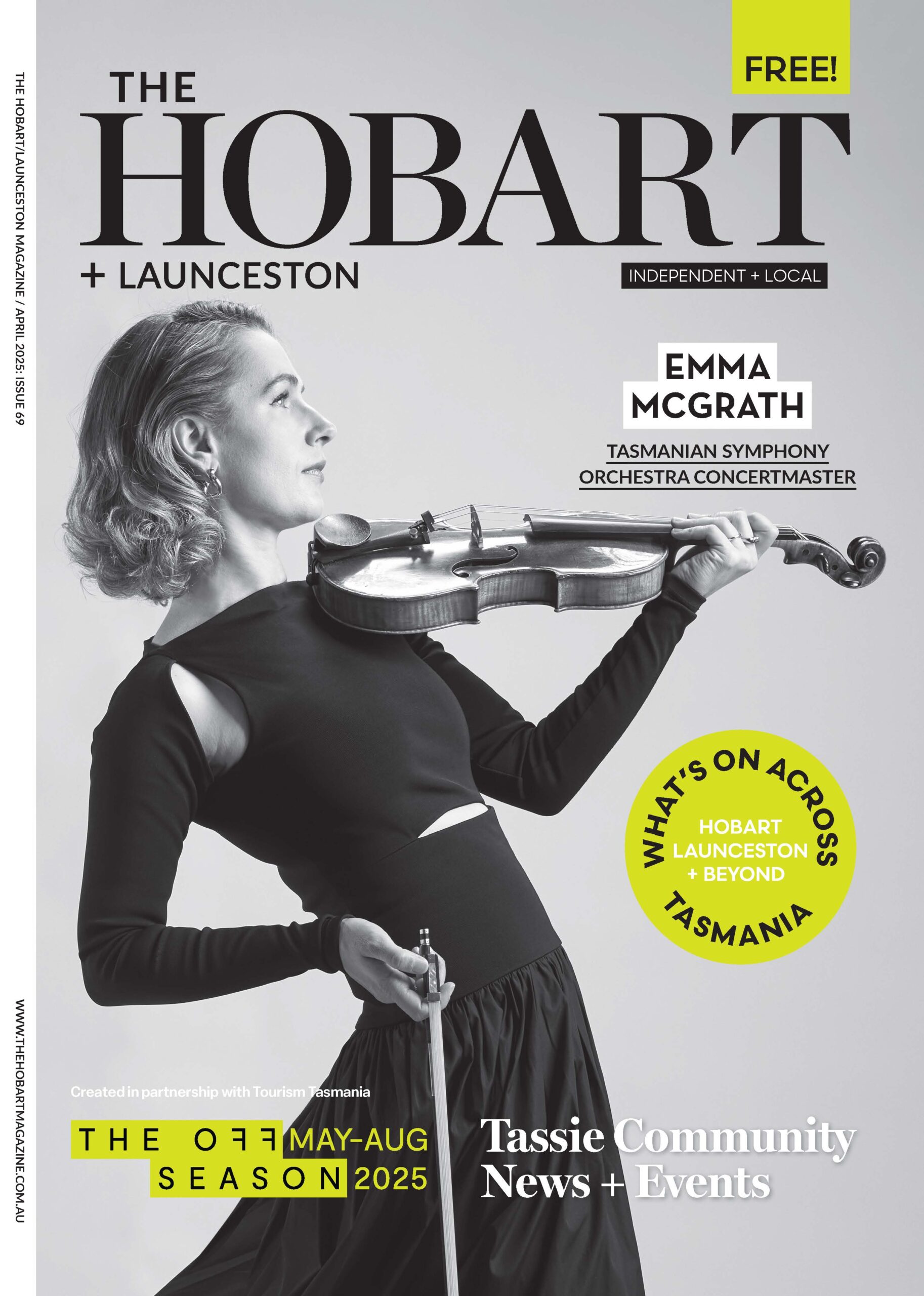A West Coast Space Odyssey
by Hobart Magazine

The West Coast Space Centre is a dream project of Mars Buttfield-Addison and her husband Paris, aiming to enrich Tasmania’s west coast with a science venue celebrating outer space.
Tell us about the West Coast Space Centre. It’s the ultimate dream of my husband Paris and I: a small, community-focused science venue for the west coast of Tasmania. It might take us a few years to save funds and find the perfect real estate, but the hope is to create a space that is both a science centre— with exhibits and shows and artefacts, focused on a topic that is interesting for all ages and accessible without expensive equipment: outer space. And a community hall—where people can establish hobby clubs, give talks on their special interests, host support services like young mothers’ clubs or training sessions, hang out after school, borrow a good book or two, run vacation activities, anything. It sounds a lot, but all it might take is a space the size of a big shed and a whole lotta love. In the meantime, we visit as often as possible, running space events, taking part in community activities, advocating for STEM resources in the region, or sometimes just parking a telescope in a public place to show passersby the sky.
How did this passion project come to be – and why Strahan? The West Coast is maybe the most beautiful place in the world. But while wealthy vacationers flock there in the thousands during Summer for food and wine and eco-tourism, the people there are struggling to staff critical services, and are suffering a huge decline in permanent population— particularly in young people, as they move away for work or study. Without new people and funds, this beautiful region and the canny, hard working people it breeds could one day cease to be. There is no single solution, but a good start might be increasing interest in STEM through recreational outreach, then providing resources for people to engage with topics among those which offer remote study and work. I’d always thought that I’d like to be an educator or a proprietor of some venue which might enrich a community somehow. This specific idea evolved over our frequent trips west, but as a vague “wouldn’t it be nice if someone…?”, and then a “we should do it, maybe one day”. But like many people, during COVID I had uncertainty, loved ones in poor health, and time to sit with ideas I’d had for a long time. There was a moment when I was sitting there, 29 years old, in hospital beside the love of my life being told I was lucky he was alive. More than ever, it felt like sitting around having “one day” plans was a big waste of time. Right then we made a concrete roadmap, and started executing on it.
When did you first fall in love with space? I always adored reading about space. The thing that made it stand out to me was the rare moments when we visited somewhere beyond greater Brisbane, where we lived, and saw the night sky properly. By the time I was in my late teens and early 20s, I was working night jobs in hospitality then driving hours out to reserves in the wee hours of the morning just to catch a glimpse. I got my first big telescope at 20, in time for a trip to the outback where I saw a meteor shower properly for the first time and the darkest skies of my life. I had visited Tasmania just once as a teen and it stuck with me for years how the skies even in the middle of the cities were dark here. Once I moved here, it became easier than ever to see and love the sky.
Can you share a fact about Tasmania’s connection to space we may not know? There are so many! From Tasmania’s own meteorite crater in the Wild Rivers reserve, to the magnetic pole proximity which gives us our beautiful aurora, to the indigenous people’s unique characterisation of sky objects, to Tasmania’s attraction of countless pioneers in physics who spent their lives tinkering and discovering here, or even the growing synergy between Antarctic research and our support of space missions—as entities like NASA recognise the similarity in training and support of humans in harsh and isolated environments.
Tell us a bit about your role as a technologist. My “day job” is at the University of Tasmania and CSIRO, where I work on radio telescopes (like the one near Richmond) to help track objects in space—like satellites, to stop them running into each other. Since COVID, I have reduced that work to part-time so that I can spend more time on the work I love: supporting educational entities and charities in making science communication fun.
Favourite sci-fi movies? Everything from the complete classics (the old Star Treks, Star Wars, Aliens) to children’s stuff (Explorers, Wall-E) to space thrillers (Sunshine, Pandorum) to corny space action movies (Armageddon, Space Cowboys, Geostorm).
You can follow the project at www.westcoastspacecentre.com and on Instagram @westcoastspacecentre.

